- Home
- Clive Cussler
Spartan Gold Page 13
Spartan Gold Read online
Page 13
He shined his flashlight left, right, ahead. He was looking for a lever, a raised cylindrical fitting in the hull. . . . And then, suddenly, there it was, ahead and to the left. He reached out, grasped the lever, and heaved. Stuck. He drew his dive knife, wedged it between the lever and hull, then tried again. With a squelch and spurt of rust, the lever gave way. Lungs pounding, he turned to the opposite valve, repeated the process, then backed out and finned to the surface.
“You okay?” Remi called.
“Define okay.”
“Not mortally wounded.”
“Then, yes, I’m okay.”
The next part of the plan took three hours, most of which they spent sorting and splicing the rope the Germans had left behind, about half of which was either completely rotted or so weakened Sam wasn’t willing to trust it. They would get only one chance at what they were attempting, he told Remi. If they failed, they would have to turn to her signal fire idea and hope help would arrive before the smoke killed them.
After four hours, at nearly two A.M. according to Sam’s watch, they were almost ready. They stood at the edge of the pier, studying their handiwork.
Two quadruple-braided lines, one secured to the sub’s bow and the other to its stern cleats, rose from the water to the ceiling, where Remi, superb climber that she was, had threaded each through a catwalk ceiling eyelet. From there, each line dropped down again and was tied off to a cable under the catwalk planking. The vertical support cables were themselves connected, midpoint to midpoint, by a carefully constructed spiderweb of rope. To one of the cables—the farthest one from the lines secured to the sub—Sam had lashed one of their scuba tanks.
“So,” Remi said. “Let’s review: You shoot the tank, the blast sheers the cables, the catwalk drops, the sub pops to the surface, and the water drains out. Is that it?”
“More or less. The tank won’t explode, but it’ll take off like a rocket. If I’ve rigged it right, the torque should part the weakened cables. Beyond that, it’s all math and chaos theory.”
Estimating the weight of the sub and the water inside it, as well as the combined weight of the catwalks and the shearing limit of the cables, had given Sam a headache, but he was fairly confident in his process. Using the ancient and rusted but still-serviceable hacksaw they’d found in the toolbox he’d cut halfway through eleven of the eighteen vertical catwalk cables.
“And gravity,” Remi added, curling her arm in his. “Win or lose, I’m proud of you.” She handed him the revolver. “It’s your mouse-trap. You get the honors.”
They climbed behind the protective bulwark of crates they’d assembled at the far end of the dock and made sure everything was snug around them, save Sam’s firing slit.
“Ready?” he asked.
Remi cupped her ears and nodded.
Sam braced his gun hand on his opposite forearm, took aim, and pulled the trigger.
The gun’s report was instantly overwhelmed by a whump-whoosh, a flash of light, the shriek of rending steel, and a thunderous splash.
Sam and Remi peeked their heads above the bulwark but for ten full seconds could see nothing but a fine mist filling the cavern. Slowly it cleared. They climbed out and walked to the edge of the pier and looked down.
“Never had any doubt,” Remi murmured.
The Marder-class mini submarine UM-77, having spent the last sixty years of its life lying on the bottom of a sea cave, now sat perfectly upright on the surface, water gushing from its scuttles.
“Beautiful,” was all Sam could say.
CHAPTER 20
With a reverberating gong that both Sam and Remi felt in their heads, the sub glanced over another boulder, tipped hard to port, then snapped upright and nosed over, plunging back into the river’s main channel. Water sluiced over the acrylic dome, obscuring Sam’s view for a few moments, then cleared. He clicked on the flashlight and shined it over the bow, but could see only rock walls flashing past on either side and whitewater crashing over the nose cone. The deadly seriousness of the experience notwithstanding, it was a lot like a ride at Disney World, Sam decided.
“You okay back there?” he called.
Remi, lying behind the cockpit seat, arms braced against the hull, shouted back, “Peachy! How long have we been going?”
Sam checked his watch. “Twenty minutes.”
“My God, is that all?”
After recovering from the mild shock that their plan had actually worked, Sam and Remi had climbed into the water and hung from the sub’s bow line, lifting the nose a few more inches off the surface and allowing the rest of the water to drain out. Remi had then crawled inside and closed both scuttles.
From there they’d had little work to do: check the sub for leaks and shore up the inside with a few carefully positioned planks from the catwalk. The fifty-gallon ballast tanks—a four-inch pipe running lengthwise down the port and the starboard side—were full and nicely balanced the sub.
Satisfied they were as prepared as possible, they’d caught four hours of sleep huddled together on the pier in a circle of lanterns. At dawn, they’d risen, eaten a breakfast of tepid water and damp beef jerky, then piled a few essentials into the sub and climbed aboard. Using a catwalk plank, Sam had paddled the sub to the mouth of the river tunnel, then closed the hatch and held on.
So far the sub’s reinforced aluminum hull was holding up well, but they both knew geology was also on their side: While the tunnel walls were still jagged, the rocks and boulders in the channel itself had long ago been smoothed by erosion, leaving no sharp edges to rip the hull.
“Brace yourself!” Sam called. “Big rock!”
The sub’s nose slammed squarely into the boulder, rose up and over the crest, then veered left. The current caught the tail section and spun it around, slamming the hull against the wall.
“Ouch!” Remi shouted over the rush.
“Okay?”
“Just another bruise for my collection.”
“We’ll get you a Swedish massage when we get back to the Four Seasons.”
“I’ll hold you to that!”
One hour turned into two as Sam and Remi rode the rapids, the sub caroming off the walls, vaulting over boulders, and tossing from one side to the other in the water. Occasionally they would find themselves in wider, calmer parts of the river, allowing Sam to open the dome and let in some fresh air to supplement the oxygen Remi was intermittently pumping into the space via their remaining scuba tank.
Almost like clockwork every few minutes the sub slammed into a jumble of boulders and they would find themselves beached, the sub either lying on its side or perched above the rapids, balanced like a teeter-totter. Each time either they would dislodge themselves by gently rocking from side to side until the sub slipped back into the channel or Sam would have to open the dome and push and lever them free using his plank paddle.
Nearing their third hour of travel, the sound of rushing water suddenly faded. The sub slowed and began spinning lazily.
“What’s happening?” Remi called.
“Not sure,” replied Sam.
He pressed his face to the dome and found himself staring up at a vaulted, stalactite-encrusted ceiling. He heard a scraping sound and looked left just in time to see a curtain of vines close over the dome like the swaying carpet arms inside an automated car wash. Sunlight burst through the dome, filling the interior with a yellow glow.
“Is that the sun?” Remi said.
“You bet it is!”
The hull scraped over sand, slowed, then came to a gentle halt. Sam peered ahead. They’d run aground in another lagoon.
“Remi, I think we have arrived.”
He unlatched the dome and swung it open. Cool, salt-tinged air rushed through the hatch. He draped his arms outside, letting them hang, then leaned his head back and let the sun wash over his face.
He heard something off to his left, opened his eyes, and turned his head. Sitting on the sand ten feet away were a young couple wearing dive fi
ns and scuba harnesses. Mouths agape and frozen in place, they stared at Sam. The man had a farmer’s tan, the woman white-blond hair—Midwesterners on a tropical adventure.
“Good morning,” Sam said. “Doing a little cave diving, I see.”
The couple nodded in unison, saying nothing.
“Be careful you don’t get lost in there,” Sam offered. “It can be a little tricky getting back out. By the way, what year is it?”
“Leave the nice people alone, Sam,” Remi whispered from the back.
CHAPTER 21
Heaven,” Remi murmured. “Absolute heaven.”
True to his word, upon returning to their Four Seasons villa, Sam had, after they’d shared a long hot shower, ordered first a sumptuous lunch of seafood salad, hot sourdough bread, and a tropical fruit bowl, then a pair of masseuses, who’d spent an hour giving them a hot stone massage before moving to deep-tissue Swedish. Sam and Remi lay side by side on the veranda, the sheer curtains billowing around them in a light tropical breeze. Down the beach, the breakers gently washed in and out, nature’s own lullaby.
Sam, hovering on the edge of sleep, simply muttered, “This is living.”
The surprised couple they’d encountered upon their exit from the cave had in fact been Midwesterners—Mike and Sarah, from Minnesota and on their honeymoon. After three tries, they’d answered Sam’s “Where are we?” question: on Rum Cay’s northern coast between Junkanoo Rock and Liberty Rock. They had, by Sam’s calculation, traveled some nine miles along the underground river.
Mike and Sarah had graciously offered to give them a ride—and a tow to the mini sub, to which Sam had grown quite attached—down the coast in their rented boat. Forty-two hours after first touching down at Rum Cay, Sam and Remi were back at their landing beach. Their host, the mysterious beachcomber, was nowhere to be seen, so they muscled the sub into the undergrowth and left a note on the hut’s wall: Please keep an eye on this. We’ll be back for it. Sam had no idea exactly what he had planned, but it seemed wrong to simply abandon it.
They then climbed aboard the Bonanza and headed for the main island and their hotel.
Massages complete, Sam and Remi lay still for a while, dozing, then got up and went back inside. Having already given Selma a “We’re okay” text message, Sam now called her and put her on speakerphone. He gave her a quick rundown of their cave odyssey.
“Well, no one can accuse the Fargos of taking mundane vacations,” Selma replied. “I may have an answer to one mystery—why it was Kholkov who came after you. Rube called: Grigoriy Arkhipov was found dead in a Yalta parking lot; his hands and feet were missing. Amputation by shotgun. Rube told me to—”
“Tell us to be careful,” Sam finished. “We are.”
“The question is, how did Kholkov find you?”
“We’ve been wondering that ourselves. Did you check our—”
“No credit checks on the account you used, and all our computers here are firewalled, so I doubt they got your itinerary that way. Same with your passport records; the government is tight with those.”
Remi said, “That leaves airlines or . . .”
“Some lead they have that we don’t,” Sam finished. “But that begs the question, why hadn’t they already raided the caves?”
“I’ll keep working on it,” Selma said, “but I don’t think it came from our end.”
“Until we know, we’ll assume the worst and keep looking over our shoulders,” Remi said.
“Good. So, about this submarine . . .”
“The UM-77,” Sam offered.
“Right. You want me to get it back here?”
“We’d better,” Remi replied, “or Sam is going to pout.”
“It’s a piece of history,” he grumbled.
They’d agreed that once this was all over they would tell both the German and the Bahamian governments about the sub pens and let the two sort it out among themselves.
“And if no one wants it?” Remi had asked.
“We’ll put it above our mantel.”
Remi had groaned. “That’s what I was afraid of.”
Now, on the phone, Selma said, “I’ll work it out. Might take a few days, but I’ll get it back here. So: Kholkov got the bottle.”
“Afraid so. Any news for us?”
“Yes, in fact, a few things I think you’ll find interesting. Care to guess what else, besides the spitting beetle, is found only in the Tuscan Archipelago?”
Remi answered first. “Our black rose.”
“Right again. We’ll have to fill in the timeline, but it seems likely the ink was applied to the labels during Napoleon’s stay on Elba.”
“Or afterward with ink from there,” Sam added. “Either way, it’s another piece in the puzzle.”
“Well, here’s another one,” Selma said. “Our bottle appears to be something of an onion wrapped in a riddle. The leather label is not one piece, but two layers pressed together. I managed to peel away the top layer without causing any damage.”
“And?”
“There’s no ink present, but more etchings—a grid of symbols, eight across and four down for a total of thirty-two.”
“What kind of symbols?”
“You name it. Everything from alchemy to Cyrillic to astrology and everything in between. My guess: They’re customized shape codes with no connection to their origin. Sam, you’re probably familiar with shape code.”
He was. During his training at the CIA’s Camp Perry, they’d spent three days on cryptographic history. “It’s essentially a substitution cipher,” he explained to Remi. He grabbed a pad and pen from the nightstand and quickly sketched three symbols:
Sam said, “Now suppose the first symbol represents the letter c; the second, a; the third, t.”
“Cat,” Remi said. “Seems pretty simplistic.”
“It is, in a sense, but in another sense it’s a virtually unbreakable code. The military uses a version of it, something called a one-time pad. The theory is this: Two people have an encoding/decoding book. One sends a message using shape codes, the other deciphers it by substituting letters for shapes. Without a book, all you’ve got is random symbols. To anyone else, they’re meaningless.”
“And we don’t have a book,” Remi said.
“Nope. Selma, can you send us—”
“On the way as we speak. It’s not the original picture I took of the label, but Wendy used a vector drawing program to re-create some of the symbols. This’ll be just a sample.”
A moment later Sam’s e-mail beeped and he called up the image:
“As for decoding it, I might have an idea about that—at least a place to start,” Selma said. “You remember the mystery man, ‘the Major’ who hired the smuggler, Arienne, to sail to Saint Helena?”
“Of course,” Remi said.
“I think I know who the Major is. I ran across an obscure German biography of Napoleon written in the 1840s. In 1779, when Napoleon was nine, he was sent to a French military school, Brienne-le-Château, near Troyes. There he met a boy named Arnaud Laurent and they became friends—all through École Royale Militaire college, then on to artillery school, and so on, all the way to Waterloo. According to the author, up until the mid 1790s, just before the First Italian Campaign, Laurent had been a step ahead of Napoleon in rank. It was said that in private or in close company Napoleon jokingly called Laurent ‘the Major.’ Napoleon had several confidants over the years, but none as close as Laurent.”
“Is there an estate?” Sam asked. “An Arnaud Laurent library, by chance?”
“No such luck. There’s not much out there on Laurent, but from what I gather, when he died in 1825, just four years after Napoleon, he was buried with what one article referred to as ‘his most prized possession.’ ”
“Which, with any luck, will be a handy-dandy decoder ring,” Sam said.
“Or book,” Remi added. “Selma, where’s he buried?”
“After his army was routed at Waterloo, Napoleon’s surrender w
as accepted aboard the HMS Bellerophon, along with Napoleon’s staff, which I’m guessing included Laurent, who was at the time his chief military adviser. Afterward the Bellerophon sailed to Plymouth, where after a two-week wait Napoleon was transferred to the HMS Northumberland—alone, with no staff—for the final voyage to Saint Helena. When Laurent died, his widow, Marie, asked the British for permission to have him buried on Saint Helena next to Napoleon, but they refused, so she did what she thought was next best thing: She had him laid to rest on Elba.”
“Strange,” Remi said.
“It’s poetic,” Sam replied. “Laurent’s general, his best friend, had died in exile and been buried in exile. His widow had chosen a spot of . . .” Sam searched for the right word. “Symbolic solidarity.”
Remi tilted her head at her husband. “That’s beautiful, Sam.”
“I have my moments. Selma, Napoleon’s remains . . . weren’t they moved from Saint Helena?”
“They were. Interesting story itself, really. In 1830 the Bourbons, who retook the throne after Napoleon’s defeat at Waterloo, were themselves overthrown by the Orléans dynasty. They were a little more nostalgic over Napoleon, so they petitioned the British for permission to bring him home. After seven years of wrangling, the Brits agreed and the remains were fetched from Saint Helena and returned to Paris. His official grave is under the dome of Les Invalides.
“Laurent’s grave is still on Elba—it’s a crypt, actually. The trick is, how do you handle it? I assume you’d prefer to avoid breaking in and playing tomb raiders.”
“Ideally,” Sam said.

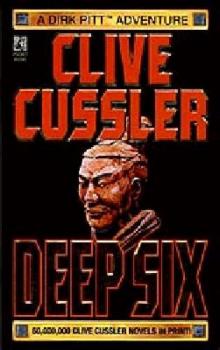 Deep Six
Deep Six Odessa Sea
Odessa Sea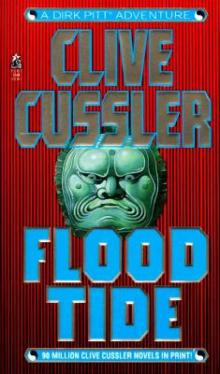 Flood Tide
Flood Tide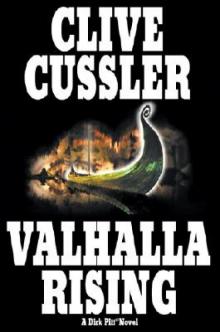 Valhalla Rising
Valhalla Rising Thriller 2
Thriller 2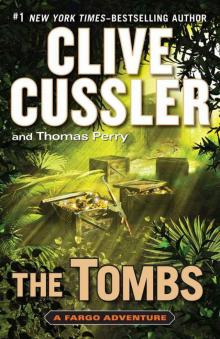 The Tombs
The Tombs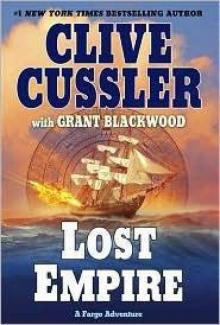 Lost Empire
Lost Empire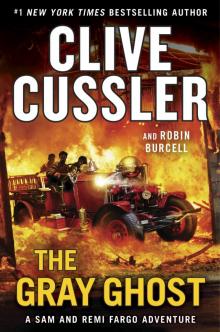 The Gray Ghost
The Gray Ghost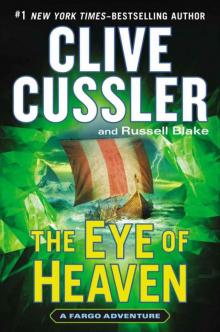 The Eye of Heaven
The Eye of Heaven Polar Shift
Polar Shift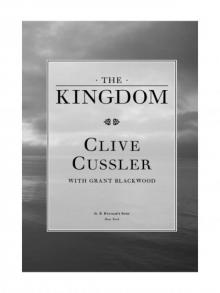 The Kingdom
The Kingdom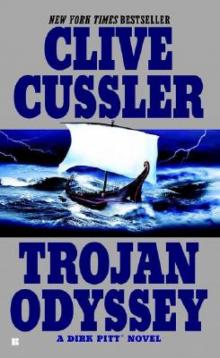 Trojan Odyssey
Trojan Odyssey Shadow Tyrants
Shadow Tyrants Nighthawk
Nighthawk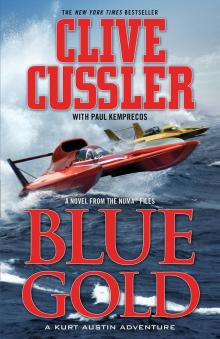 Blue Gold
Blue Gold Serpent
Serpent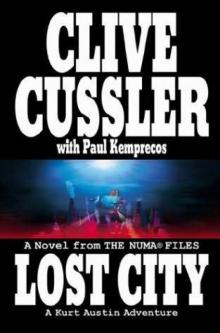 Lost City
Lost City The Gangster
The Gangster White Death
White Death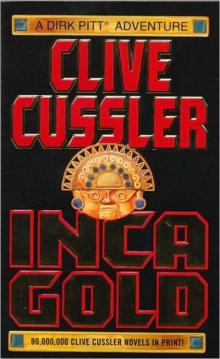 Inca Gold
Inca Gold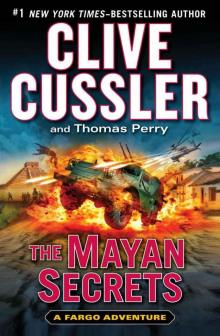 The Mayan Secrets
The Mayan Secrets The Pharaoh's Secret
The Pharaoh's Secret The Emperor's Revenge
The Emperor's Revenge Corsair
Corsair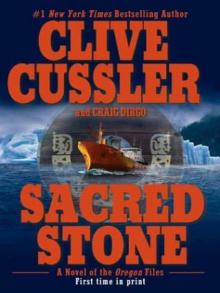 Sacred Stone
Sacred Stone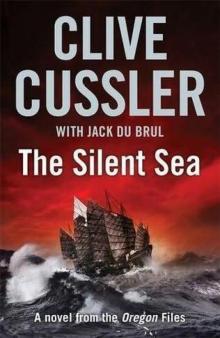 The Silent Sea
The Silent Sea The Rising Sea
The Rising Sea Black Wind
Black Wind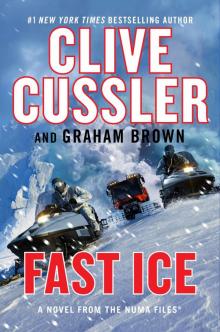 Fast Ice
Fast Ice Ghost Ship
Ghost Ship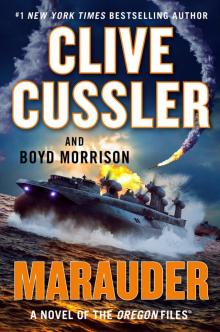 Marauder
Marauder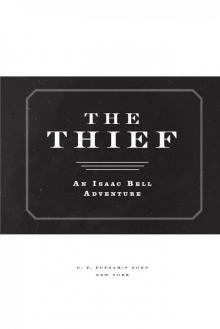 The Thief
The Thief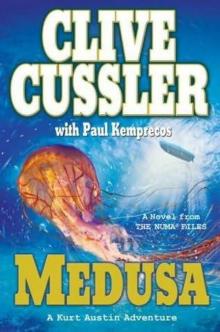 Medusa
Medusa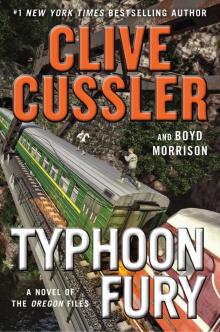 Typhoon Fury
Typhoon Fury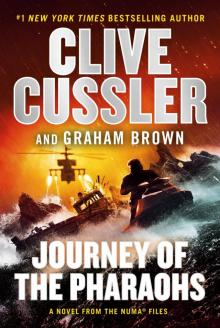 Journey of the Pharaohs
Journey of the Pharaohs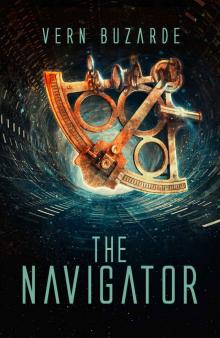 The Navigator
The Navigator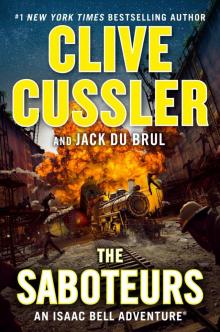 The Saboteurs
The Saboteurs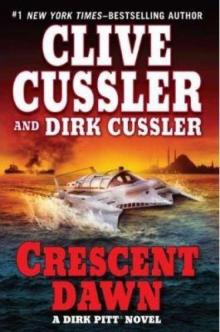 Crescent Dawn
Crescent Dawn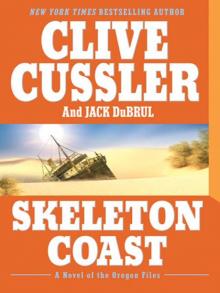 Skeleton Coast
Skeleton Coast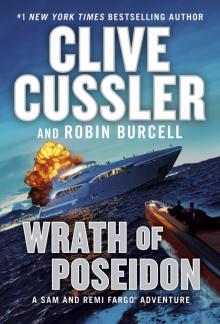 Wrath of Poseidon
Wrath of Poseidon The Mediterranean Caper
The Mediterranean Caper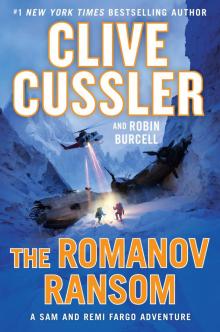 The Romanov Ransom
The Romanov Ransom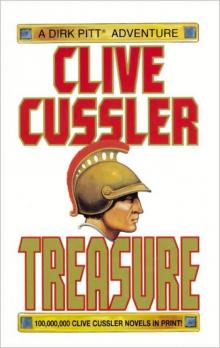 Treasure
Treasure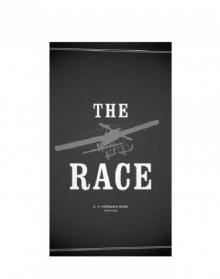 The Race
The Race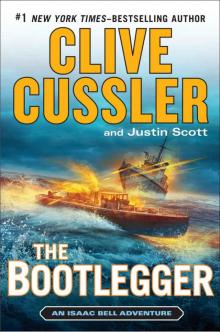 The Bootlegger
The Bootlegger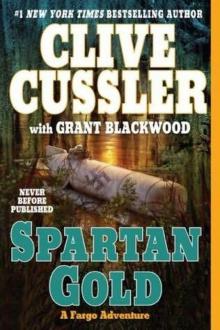 Spartan Gold
Spartan Gold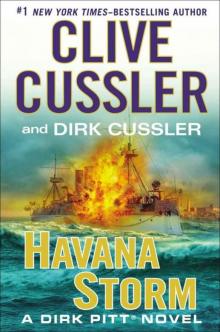 Havana Storm
Havana Storm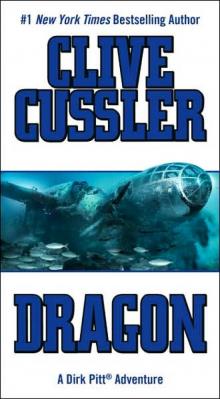 Dragon
Dragon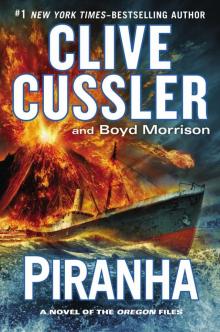 Piranha
Piranha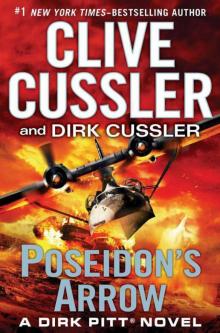 Poseidon's Arrow
Poseidon's Arrow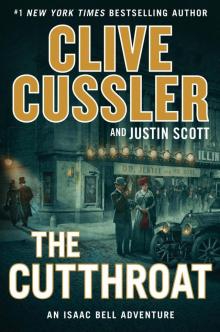 The Cutthroat
The Cutthroat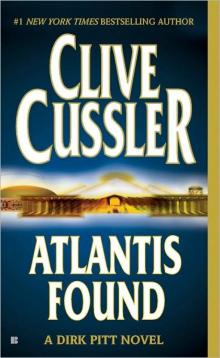 Atlantis Found
Atlantis Found The Jungle
The Jungle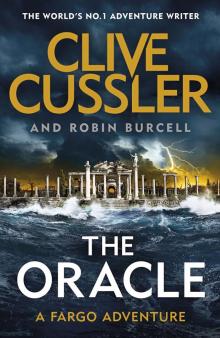 The Oracle
The Oracle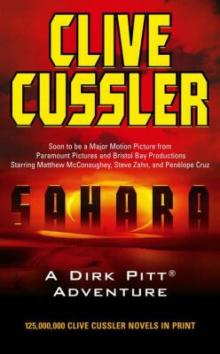 Treasure / Dragon / Sahara: Clive Cussler Gift Set
Treasure / Dragon / Sahara: Clive Cussler Gift Set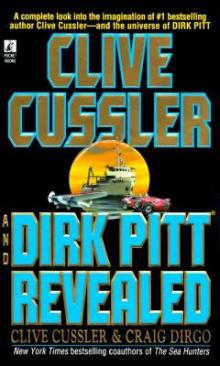 Clive Cussler and Dirk Pitt Revealed
Clive Cussler and Dirk Pitt Revealed The Sea Hunters
The Sea Hunters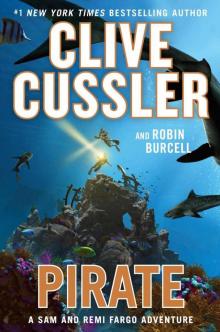 Pirate
Pirate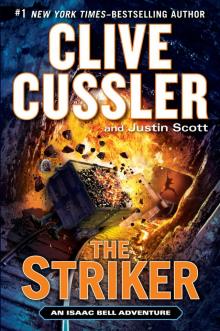 The Striker
The Striker Plague Ship
Plague Ship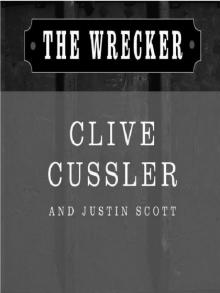 The Wrecker
The Wrecker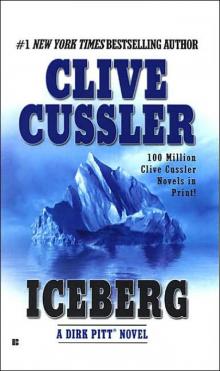 Iceberg
Iceberg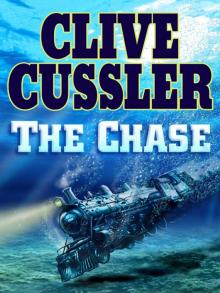 The Chase
The Chase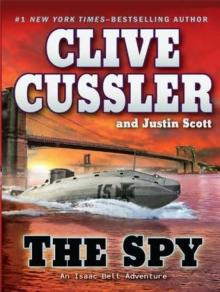 The Spy
The Spy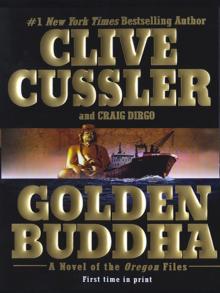 Golden Buddha
Golden Buddha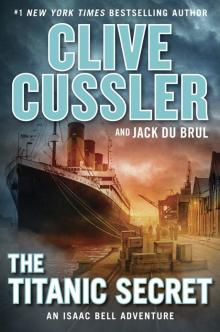 The Titanic Secret
The Titanic Secret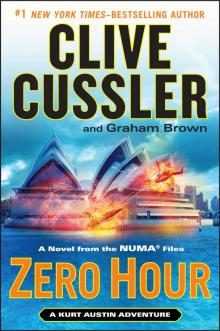 Zero Hour
Zero Hour Fire Ice
Fire Ice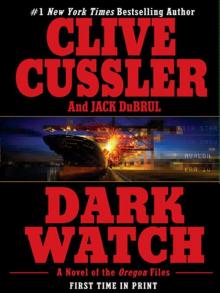 Dark Watch
Dark Watch The Storm
The Storm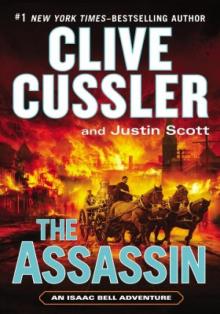 The Assassin
The Assassin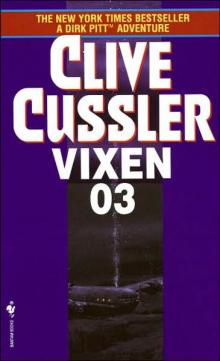 Vixen 03
Vixen 03 Arctic Drift
Arctic Drift Night Probe!
Night Probe! Cyclops
Cyclops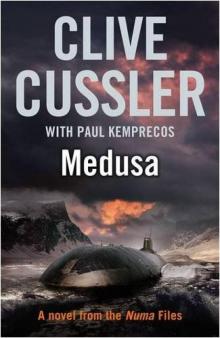 Medusa nf-8
Medusa nf-8 Shock Wave dp-13
Shock Wave dp-13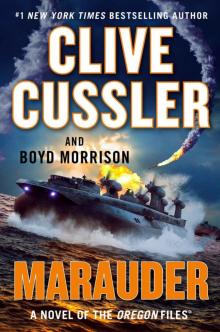 Marauder (The Oregon Files)
Marauder (The Oregon Files)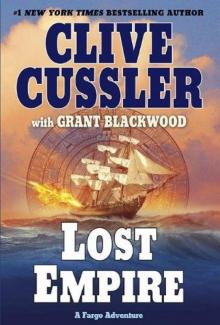 Lost Empire fa-2
Lost Empire fa-2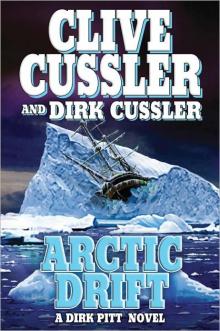 Arctic Drift dp-20
Arctic Drift dp-20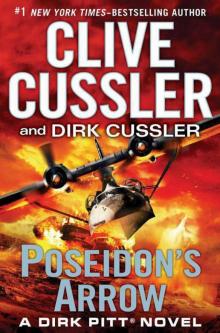 Dirk Pitt 22 - Poseidon's Arrow
Dirk Pitt 22 - Poseidon's Arrow Treasure of Khan dp-19
Treasure of Khan dp-19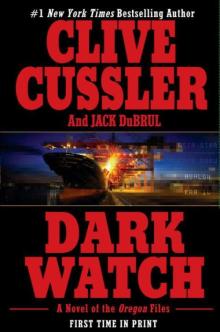 Dark Watch of-3
Dark Watch of-3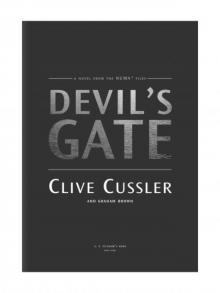 Devil's Gate
Devil's Gate The Sea Hunters II: More True Adventures with Famous Shipwrecks
The Sea Hunters II: More True Adventures with Famous Shipwrecks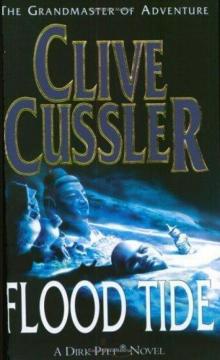 Flood Tide dp-14
Flood Tide dp-14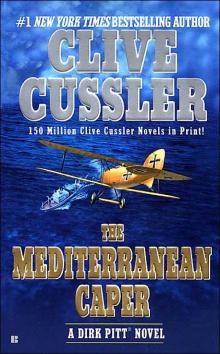 The Mediterranean Caper dp-2
The Mediterranean Caper dp-2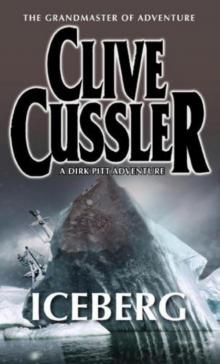 Iceberg dp-3
Iceberg dp-3 Sahara dpa-11
Sahara dpa-11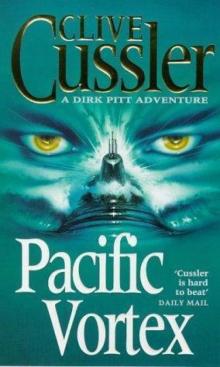 Pacific Vortex! dp-1
Pacific Vortex! dp-1 Deep Six dp-7
Deep Six dp-7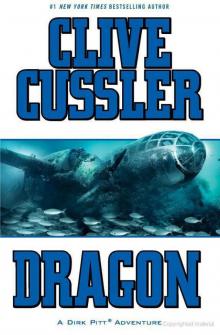 Dragon dp-10
Dragon dp-10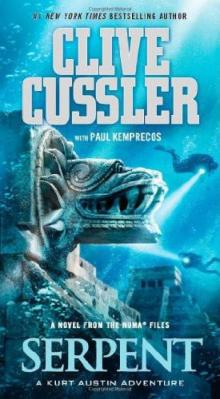 Serpent nf-1
Serpent nf-1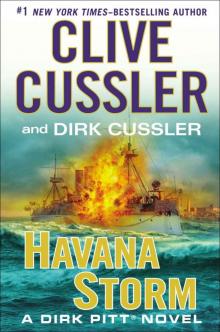 Havana Storm (Dirk Pitt Adventure)
Havana Storm (Dirk Pitt Adventure)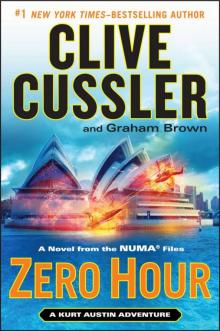 Zero Hour nf-11
Zero Hour nf-11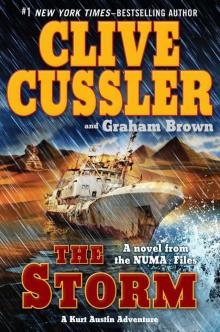 The Storm nf-10
The Storm nf-10 The Thief ib-5
The Thief ib-5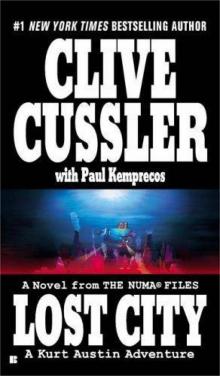 Lost City nf-5
Lost City nf-5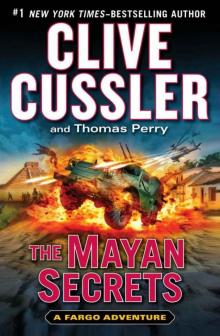 The Mayan Secrets fa-5
The Mayan Secrets fa-5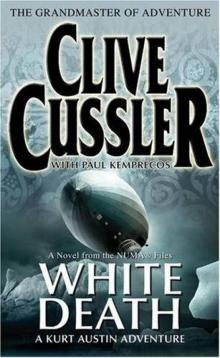 White Death nf-4
White Death nf-4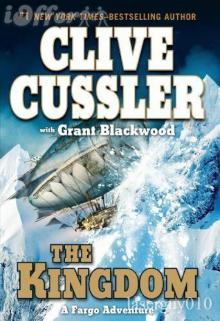 The Kingdom fa-3
The Kingdom fa-3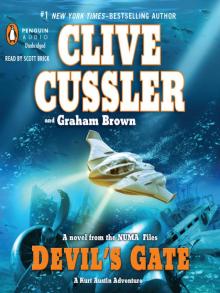 Devil's Gate nf-9
Devil's Gate nf-9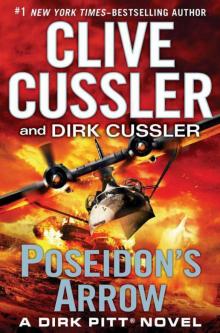 Poseidon's Arrow dp-22
Poseidon's Arrow dp-22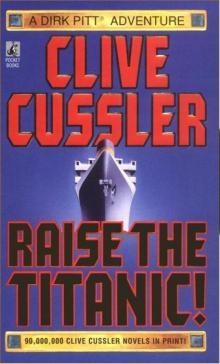 Raise the Titanic dp-4
Raise the Titanic dp-4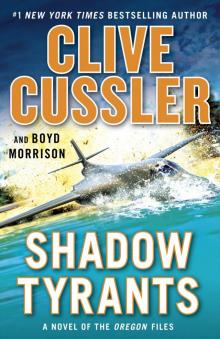 Shadow Tyrants--Clive Cussler
Shadow Tyrants--Clive Cussler Sacred Stone of-2
Sacred Stone of-2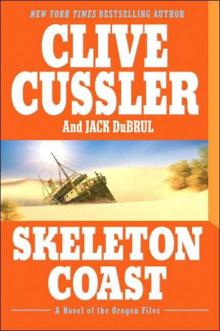 Skeleton Coast tof-4
Skeleton Coast tof-4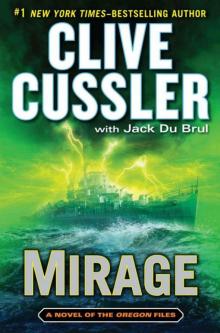 Mirage tof-9
Mirage tof-9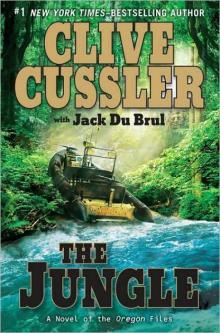 The Jungle of-8
The Jungle of-8 The Emperor's Revenge (The Oregon Files)
The Emperor's Revenge (The Oregon Files)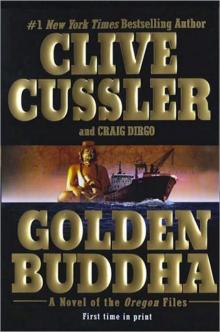 Golden Buddha of-1
Golden Buddha of-1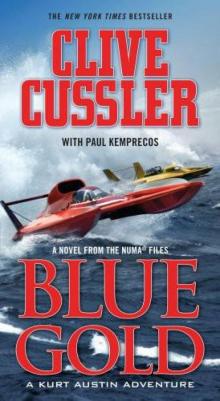 Blue & Gold
Blue & Gold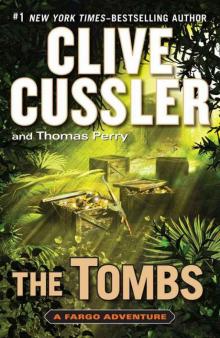 The Tombs fa-4
The Tombs fa-4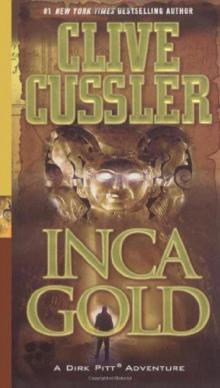 Inca Gold dp-12
Inca Gold dp-12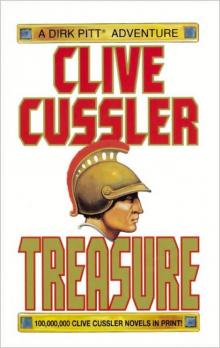 Treasure dp-9
Treasure dp-9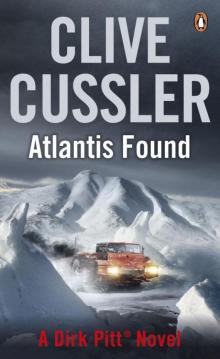 Atlantis Found dp-15
Atlantis Found dp-15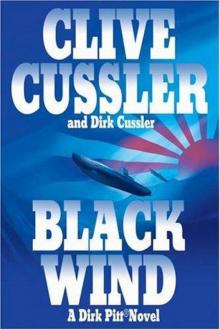 Black Wind dp-18
Black Wind dp-18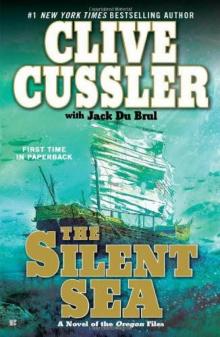 the Silent Sea (2010) tof-7
the Silent Sea (2010) tof-7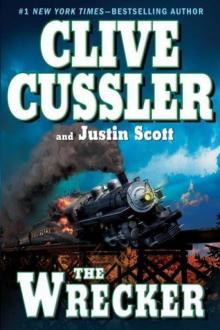 The Wrecker ib-2
The Wrecker ib-2 Fire Ice nf-3
Fire Ice nf-3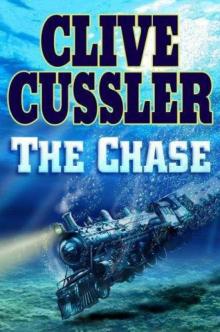 The Chase ib-1
The Chase ib-1 Sahara
Sahara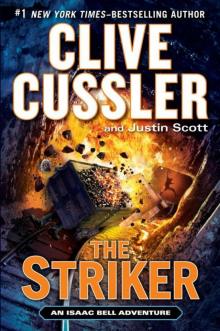 The Striker ib-6
The Striker ib-6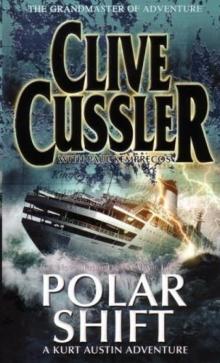 Polar Shift nf-6
Polar Shift nf-6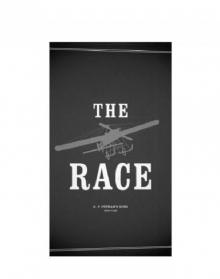 The Race ib-4
The Race ib-4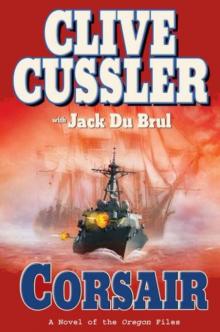 Corsair of-6
Corsair of-6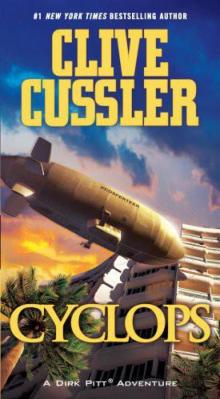 Cyclops dp-8
Cyclops dp-8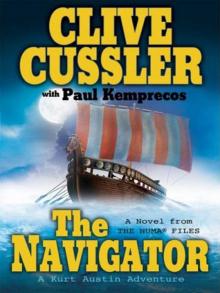 The Navigator nf-7
The Navigator nf-7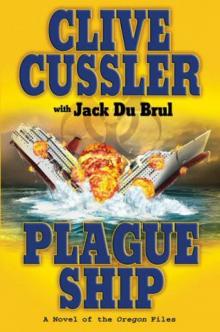 Plague Ship tof-5
Plague Ship tof-5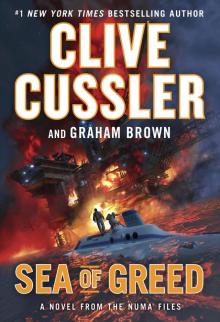 Sea of Greed
Sea of Greed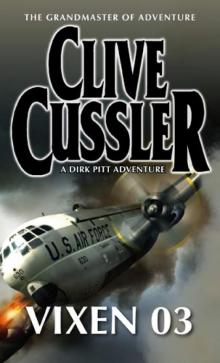 Vixen 03 dp-5
Vixen 03 dp-5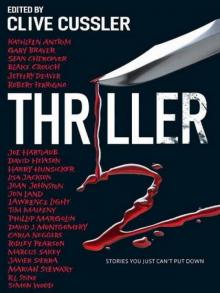 Thriller 2: Stories You Just Can't Put Down
Thriller 2: Stories You Just Can't Put Down